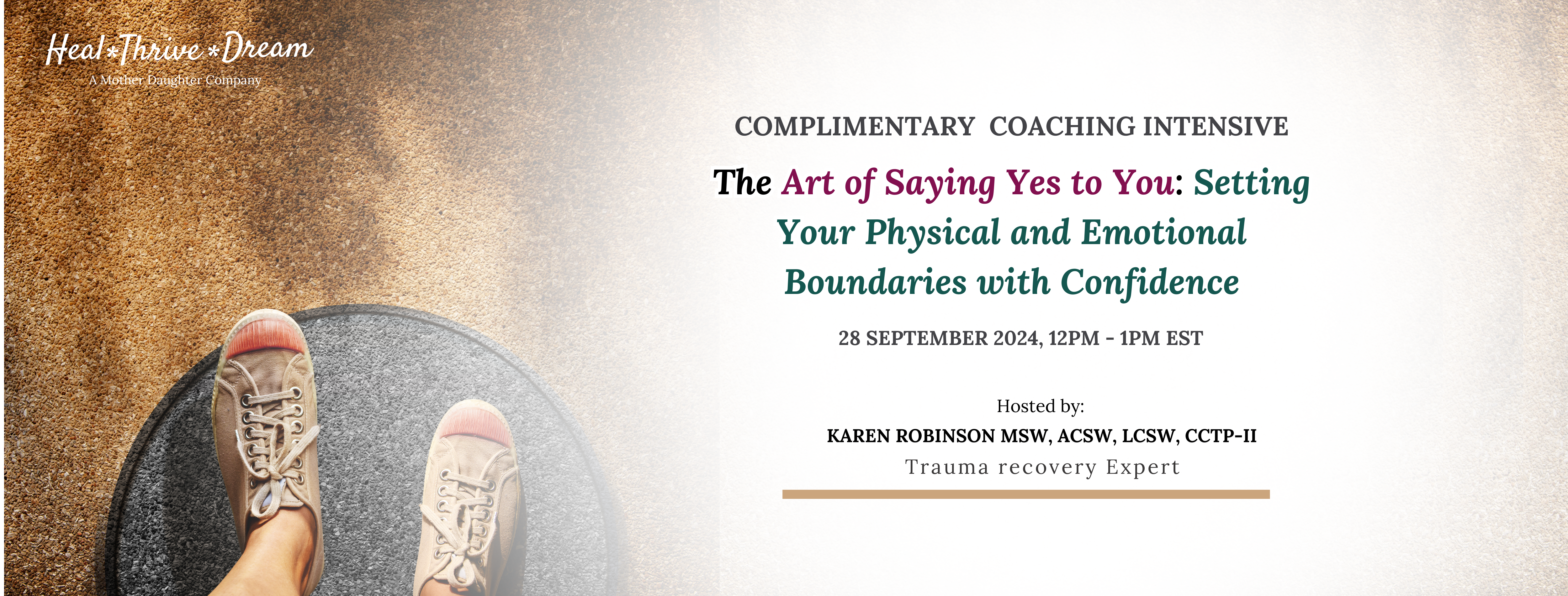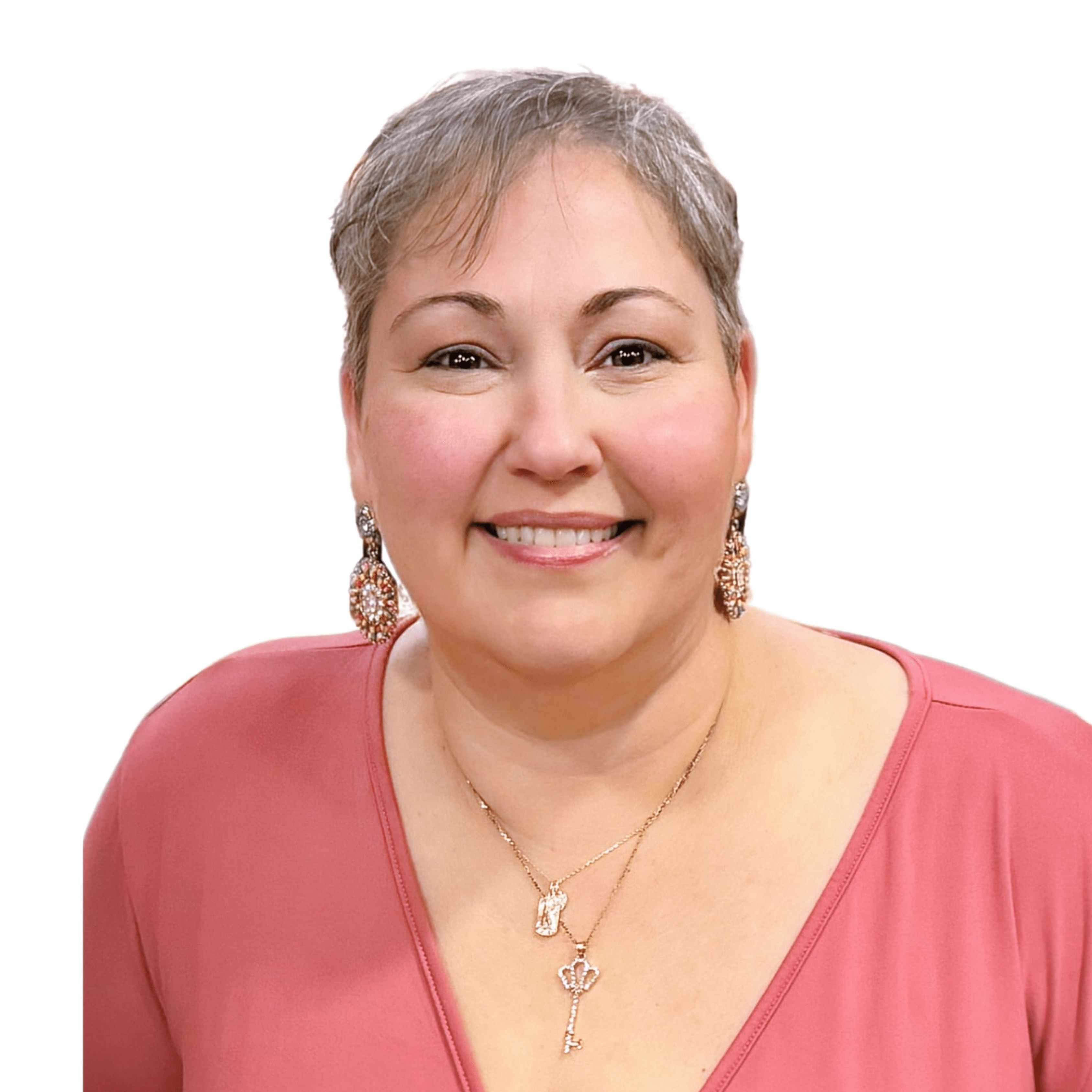Nurturing Your Emotional Boundaries After Trauma
Do you ever feel like you give too much of yourself to others, leaving nothing for your own well-being? It's time to examine your emotional boundaries and learn how setting limits can lead to more peace, less drama in your life! You have the power to decide what you will and won't tolerate in your relationships, whether it's with friends, family, or romantic partners. By understanding the importance of emotional boundaries and learning how to establish them, you can protect yourself from unnecessary stress and maintain healthier connections. So, grab a pen and paper as we embark on this journey towards self-discovery! Join my free coaching intensive today!
Have you ever found yourself feeling uncomfortable in certain situations but unsure of how to assert your needs? This is referring to your physical boundaries – those invisible lines that define what is acceptable and what isn't when it comes to touch and personal space. Whether it's an unwanted hug from a coworker or feeling pressured into intimacy by a partner, understanding the significance of physical boundaries is crucial for maintaining your healthy relationships. In my healing coaching intensive, I delve into why these boundaries matter, explore ways to communicate them effectively without causing conflict, and empower you with the tools necessary for reclaiming control over your body. Get ready to redefine your comfort zone!
Check out my free healing coaching intensive to learn more:
https://www.healthrivedream.com/settingboundaries/

Understanding Boundaries
It is okay to not have all the answers on how to set appropriate boundaries. You were likely not taught how to do this in your family. I know I wasn’t. Your self-empowerment journey includes learning new information, so, let's clarify what boundaries are. Boundaries are like personal fences that protect your physical and emotional space. They define what is acceptable and unacceptable to you, ensuring that you feel safe and respected in your interactions with others.
Recap of Your Physical Boundaries
Physical boundaries encompass the space around you and your body. Strengthening physical boundaries is crucial for maintaining personal safety and comfort.
- Identify Your Comfort Zone: These are the physical spaces and situations where you feel the most secure.
- Learn to Say "No": This is a powerful tool for reinforcing physical boundaries. It's about respecting your limits and asserting your needs.
- Trust Your Gut: Listen to your instincts. If something doesn't feel right, trust your inner voice and remove yourself from the situation.
- Set Personal Space Rules: Communicate your boundaries to those around you. Let them know how you want to be treated physically and what you're comfortable with.
Recap of Your Emotional Boundaries
Emotional boundaries protect your inner world, ensuring your emotions and feelings are respected and safeguarded.
- Recognize Emotional Triggers: Identify situations, people, or topics that trigger negative emotions. Awareness is the first step toward setting emotional boundaries.
- Practice Self-Compassion: Be kind to yourself. Understand that it's okay to feel emotions, even if they are painful or challenging.
- Learn to Say "Yes" to Yourself: Prioritize your emotional well-being. Saying "yes" to self-care and activities that bring you joy is an important aspect of setting emotional boundaries.
- Seek Support: Share your feelings with trusted friends, family, or a therapist. Having a support system can provide you with the emotional reinforcement you need. Please check out my coaching and support group: This is Us: Healing From Trauma Together.
The 7 Steps of Self-Empowerment
Strengthening your physical and emotional boundaries is a journey, not a destination. It's about recognizing your worth and taking control of your life. Here are some steps to help you on this empowering journey:
- Self-Reflection: Reflect to understand your past experiences and how they may have shaped your boundaries. This awareness is the foundation for change.
- Set Clear Intentions: Define what you want to achieve in terms of physical and emotional boundaries. Having clear intentions will guide your actions.
- Educate Yourself: Learn about healthy boundaries. Reading books, articles or attending workshops can provide valuable insights and strategies. https://www.healthrivedream.com/settingboundaries/
- Seek Professional Help: If your trauma or past experiences are overwhelming, consider seeking therapy. A trained therapist can offer guidance and support tailored to your needs.
- Celebrate Progress: Celebrate each step forward, no matter how small. Recognize that healing is a process, and you're making meaningful strides.
- Surround Yourself with Positivity: Surround yourself with people who support your journey to self-empowerment. Positive relationships can reinforce your newfound boundaries.
- Stay Mindful: Practice mindfulness to stay present and attuned to your emotions. Mindfulness can help you identify when your boundaries are being challenged.
Key Take Aways
The journey to self-empowerment through strengthened physical and emotional boundaries is a hopeful and transformative one. It's a testament to your resilience and your determination to live life on your terms.
Remember that you have the strength to set and enforce your boundaries, and you deserve a life where you feel safe, respected, and empowered. As you embark on your healing journey, keep your vision of the future you want in mind, where your boundaries are your pillars of your self-worth and protection. With each baby step you take, you're moving closer to that hopeful future you have envision and will feel empowered by your self-discovery.
See you in my free healing intensives!




This post made me stop and think…. I realized that even though I've greatly improved in setting boundaries (all the types mentioned), I still don't always follow through with it, especially in my relationship with my significant other. For some reason, I have a hard time setting and sticking to boundaries in that relationship. Like Lisa mentioned in her comment, I too suffer from people-pleasing syndrome – not so much as in the past – and when I was living in that mode all the time, it was pretty much zilch in the boundaries department! I've learned that setting and sticking to boundaries is like a lot of other things I work on in life – it's a journey not a destination 🙂
Hi Tish, you are right on the money. It is indeed a journey and not a destination. It is a challenge to set boundaries with those closest to us. Once we practice, it gets much easier! I think you might enjoy the replay from the coaching intensive. A couple of other participants and myself role played boundary setting with family members. It was uncomfortable! Being clear with what you want, need, and deserve, is an excellent start. Baby steps. xoxo Karen
Great article! I have always struggled with being a people pleaser. I love that "No" is a complete sentence, and adding onto that "Say yes t yourself" – thank you for a wonderful article and a gentle reminder this morning that I can press into peace..
Thank you for visiting my blog Lisa! Come back soon for awesome content.:-)